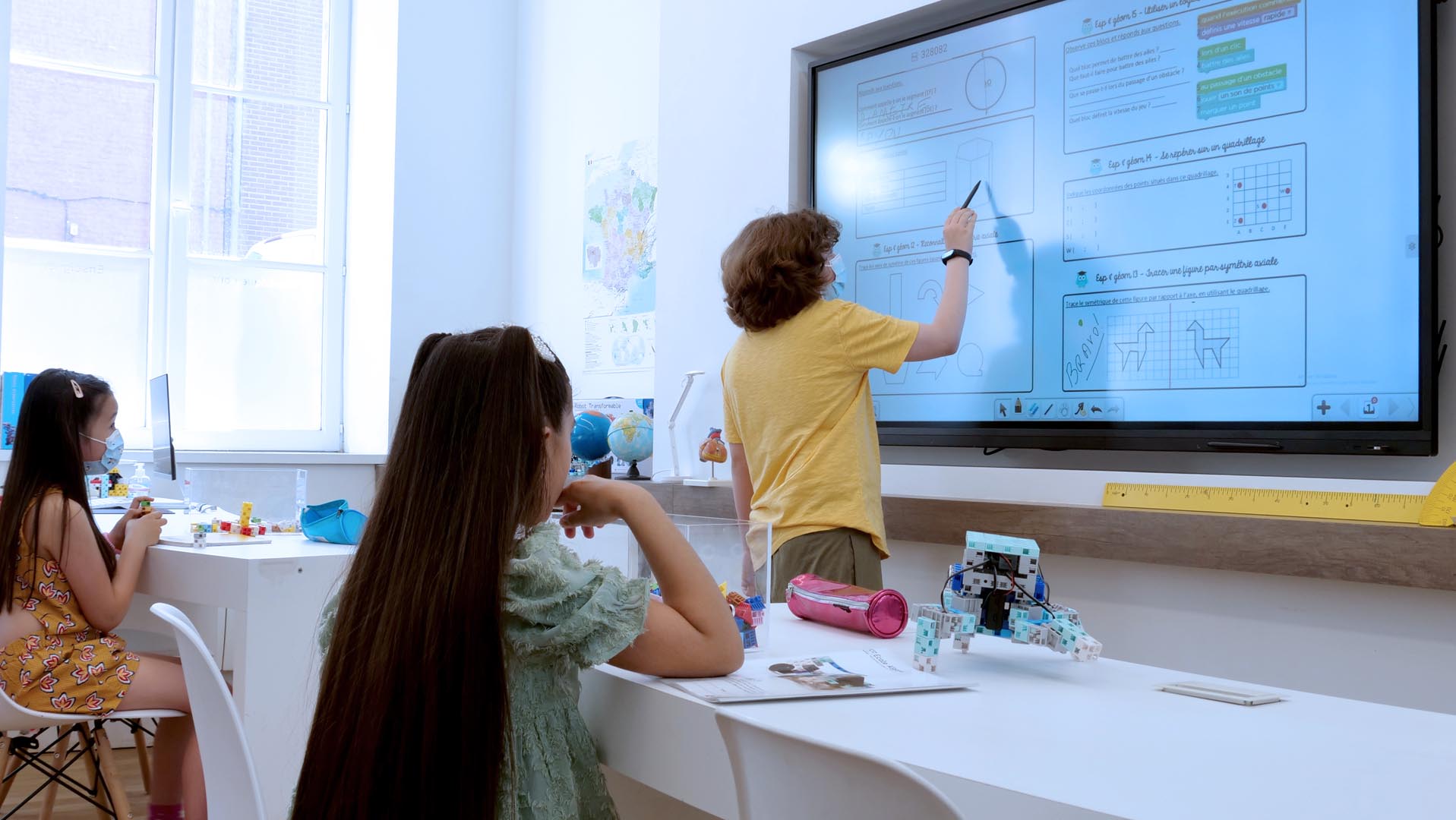Transform your school classrooms into lively hubs for learning and enrichment.
Smart white boards have taken the education sector by storm, with teachers everywhere harnessing their potential to bring classes to life.
However, with so many smart white boards and models available on the market, choosing the best smart board for your preschool, school, high school or college can be a challenge. Read on to find out what you should keep in mind when picking the best smart white board for your educational space.
Choosing the best smart white board for preschool classrooms

Screen size is the most important factor to take into account when identifying the best smart white board for your preschool classroom. Since preschoolers are small in stature, we’d strongly recommend opting for the smallest available model – our 55” display screens. Anything larger would be a challenge for preschoolers to reach and use with ease.
It’s also vital to set up a height-adjustable screen support, so that both teachers and preschoolers can interact with it when they need to do so. After all, where’s the benefit of a smart white board if it’s too high for the preschoolers to reach it?
Choosing the best smart white board for primary school classrooms

For key-stage 1 and key-stage 2 pupils, screen size will still be the most important determining factor – but at this stage, you can size up a bit. How large is your classroom?
Keeping in mind that the average primary school classroom is around 6 metres in depth, we’d recommend a 65” smart white board screen. Opting for this size will ensure that students can see and hear the content you are showcasing on your screen display, even if they’re sat at the back row of the classroom.
For primary school use, we still strongly recommend using a height-adjustable screen support, as there is still a significant height difference between teachers and students.
Depending on the layout of your classroom and how you intend to use your smart white board, it’s also worth thinking about whether you want a free-standing or wall-mounted height-adjustable support.
Choosing the best smart white board for high school classrooms
For high school classrooms, your choices will change considerably. Generally, they are significantly larger than primary school classrooms – and height difference is no longer as much of an issue between students and teachers, so it’s worth sizing up once again. At this stage, it’s worth opting for a screen size of 75” or more, to ensure that everyone sat in the classroom has a clear view of the display.
When it comes to screen supports, a fixed-height option will be fine at this stage.
To determine whether you want a wall-mounted or free-standing support, you’ll need to consider how you plan to use it in the classroom. Will you keep it at the front of the classroom, or would you rather move it around depending on the activity you’re leading? If you would prefer to have the option of wheeling it around, opt for a free-standing support.
Choosing the best smart white board for college classrooms

At this stage, you’re teaching young adults – so your options are much wider in terms of screen size. To determine the right screen dimensions for your college classroom, keep in mind the room’s size and the seating plan you intend to set up.
Everyone should be able to reach and interact with the smart white board at ease, but you’ll want to ensure that the screen display is clearly visible throughout the entire space. Since Speechi screen sizes range between 55” and 105”, you’ll be sure to find the right option for your college classroom.
Depending on what subject you teach in college, it’s also worth thinking about the screen sensitivity you need. Are you teaching a particularly visual subject that involves showcasing a lot of drawing or diagrams? Architecture, fashion design and fine art are examples of these subjects.
If this covers your use-case, it may be worth investing in a capacitive screen. With ultra-high precision and zero bonding technology, drawing on the screen surface will feel as natural as using a pencil on paper. For other use-cases that fall outside of this category, an infrared screen will be the best choice.
